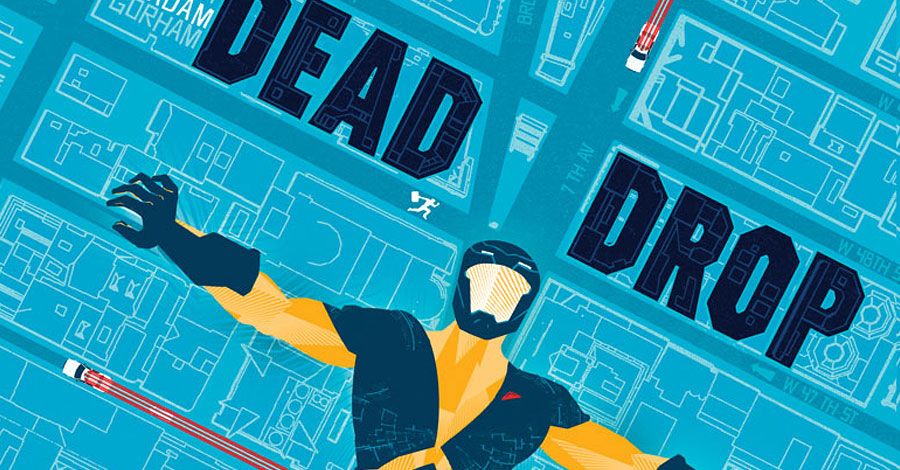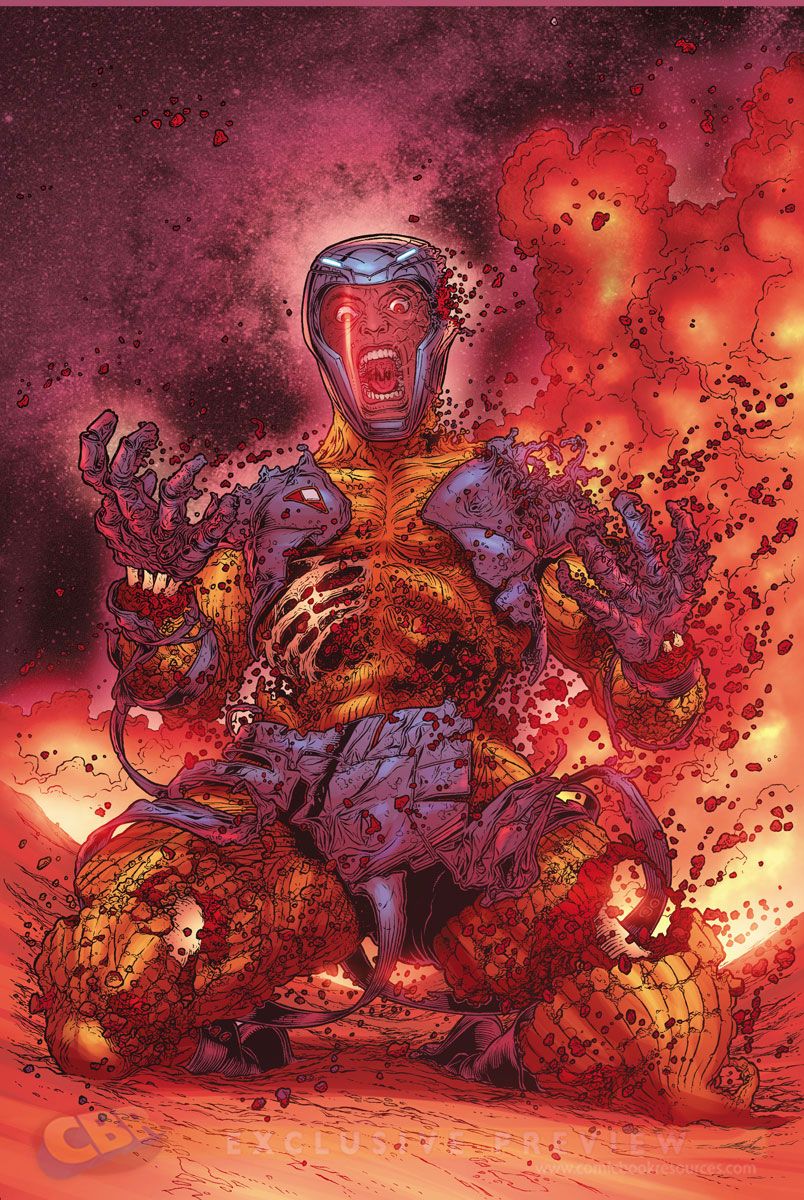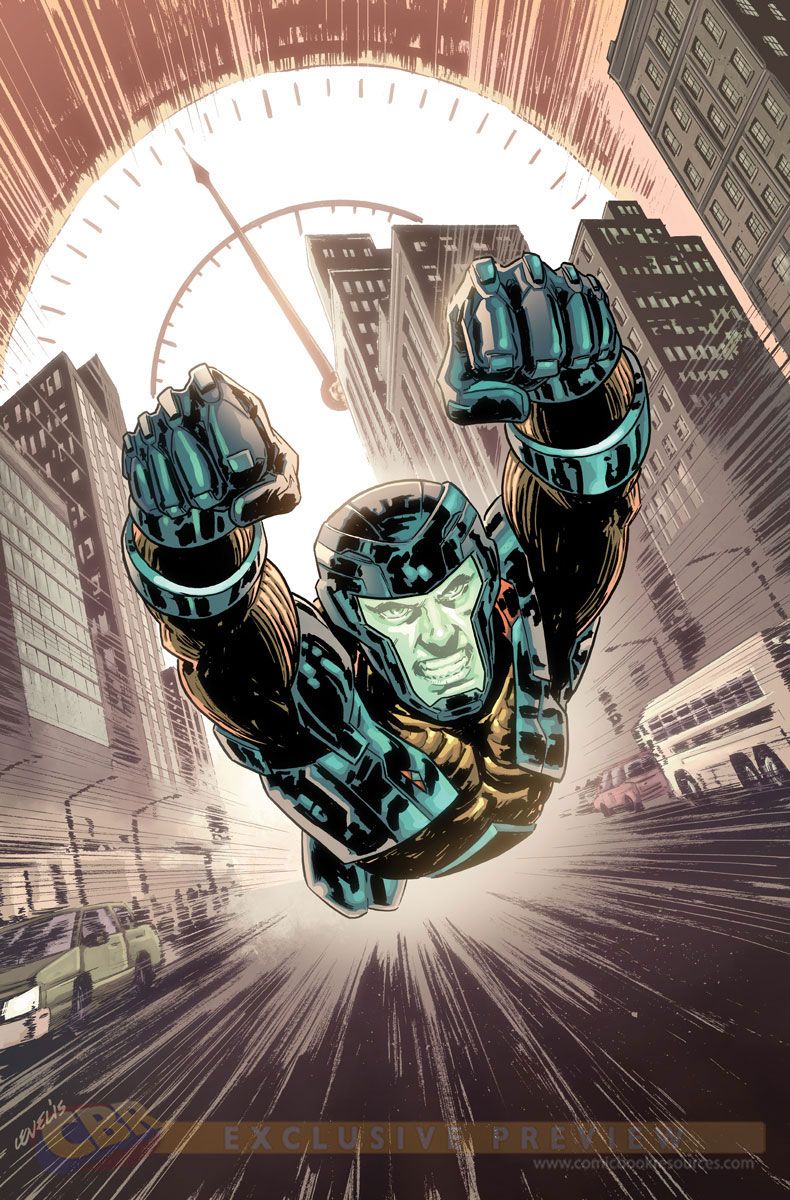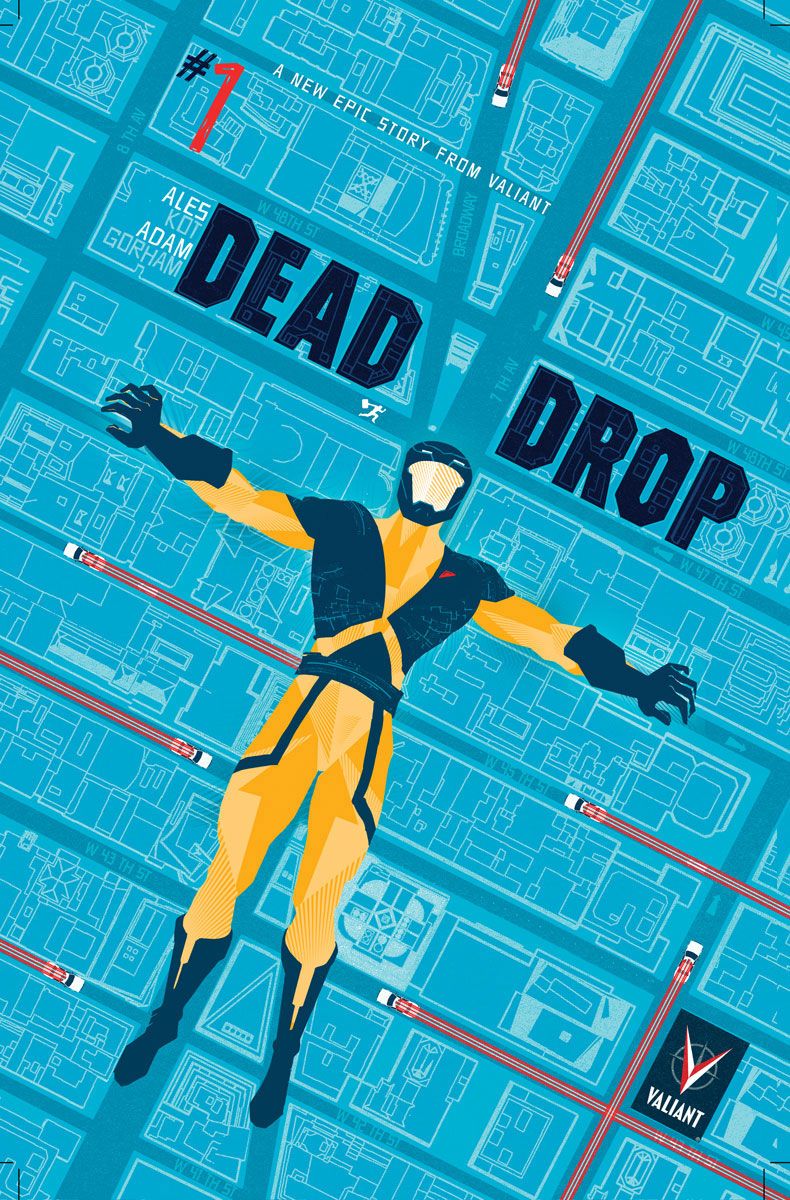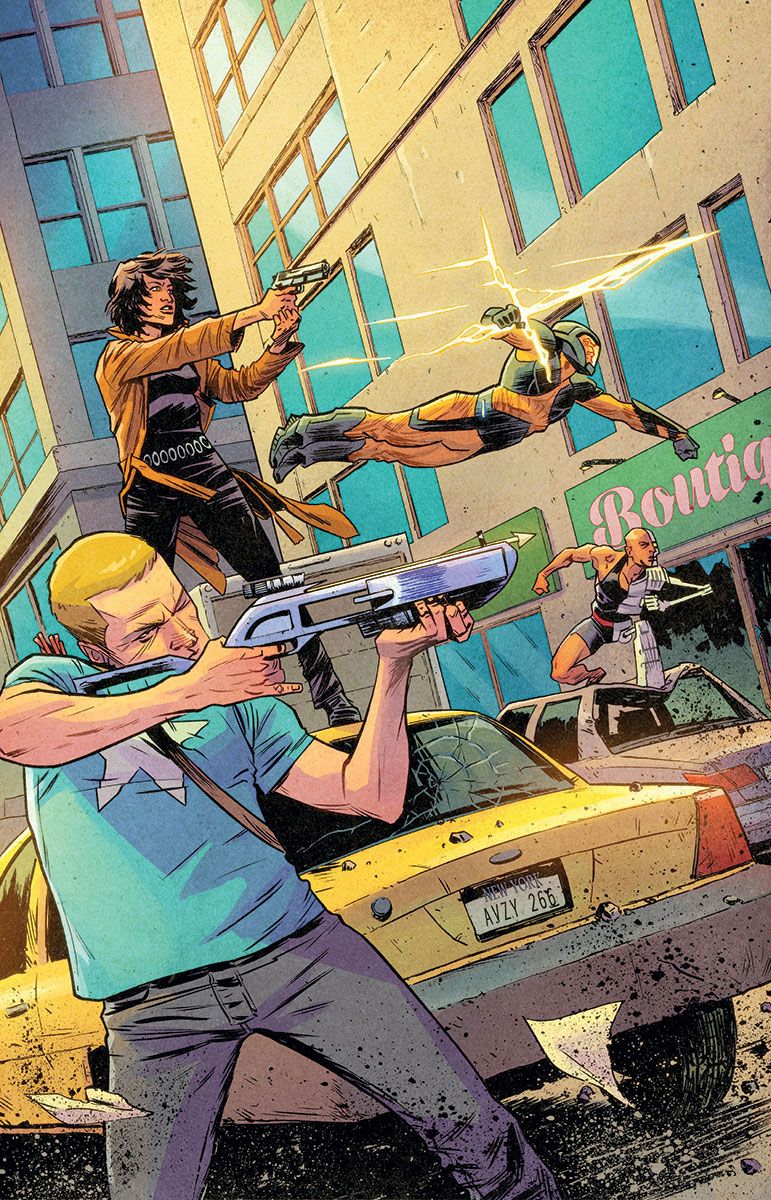This May, Ales Kot and Adam Gorham place the Valiant Universe firmly in their crosshairs in the new four-issue miniseries "Dead Drop." Featuring an ensemble cast, the series follows Archer, X-O Manowar, Detective Cujedo (from "Quantum & Woody"), Neville Alcott (from "Ninjak") and Beta-Max(!) as they attempt to shut down an alien contagion which has made its way into the hands of New York's black market.
And Archer's not wearing any pants.
Each issue of the miniseries follows a different character as they play their part in trying to protect the streets of New York from both the virus and the players threatening to release it on the World. With "Dead Drop" launching in a few months, CBR News spoke with writer Ales Kot about his first steps into the Valiant Universe, working with his "Zero" collaborator Adam Gorham, and what to expect from the series.
CBR News: The mini picks up characters from all across the books, including several I don't think anybody could've predicted -- how much familiarity did you have with the Valiant Universe before this series?
Ales Kot: I enjoyed a lot of Josh Dysart's and Co.'s "Harbinger," and I love the "Shadowman" concept. Anything based in voudon I'm interested in -- I love Maya Deren's work, and I've had some interesting experiences, so that's how that connects. By the way, did you know that Andrzej Zulawski is rumored to have used voudon (or, voodoo, in its alternative spelling) when filming "Szamanka" and "Possession?"
Anyway. When I looked at the characters and clicked with the right ones, I did more research. I had some familiarity with the Valiant Universe, but nothing overt. I rarely read superhero comics these days. That's not a diss -- they just don't resonate with me. So the challenge here is, how do I make a superhero comic that would resonate with me? "Secret Avengers" is a good example of me figuring that out. I want "Dead Drop" to be another.
You've spoken in the past of your "war trilogy" of comics, being "Zero," "Secret Avengers" and "Winter Soldier," all books which start in a relatively grounded place but grow into bigger, quite cosmic stories. How does "Dead Drop" follow on from those, thematically?
It doesn't. Or maybe it does. I'm not sure yet. I actually still have no idea how it fits into my overall output -- I'm still figuring out what it's saying and working through on a personal level. I like that I don't know everything at this point, because it allows for the joy of discovery. I want that joy of discovery communicated through the comic.
I know what I'm doing -- but just up to a point. Same applies to my life overall. Being in the not knowing, and being not only okay with that, but actively courting it, being creatively destructive and embracing it as well as embracing creative order -- I'm learning how to do all these things, and I suspect I'll never stop. The key is, it has to come from my heart.
How did the concept for "Dead Drop" come into existence? Did Valiant already have the story in mind, or was it something you brought to them?
Warren Simons at Valiant wanted to work with me for a while because I'm the best new writer in comics.
Let that sink in. Yeah.
I'm joking. I don't care about that sort of a value judgment. The truth at the core of that statement is that Warren did want to work with me for a while, and gave me carte blanche to play with some characters and tell a story I'll feel like telling. So we found the right characters together -- based on self-imposed factors of reflecting diversity and having fun -- and I found the story.
Things start with well-known characters like X-O Manowar and a pantsless Archer, but then the story gets picked up by Beta-Max and resolved by Detective Cujedo -- is there intent to that decision? To start with the A-List characters and slowly turn towards the lesser-known figures?
Yes. I want to tell everyone who already reads Valiant comics to come in and take the ride. Then I want to steer the ride somewhere unusual and new. The strategy is calculated, but not cold.
With each issue centered around a different character, do you view these as a connected series of one-off stories? Is there a consistent tone or genre across the four, or is the plan to head off in different creative directions with each new issue?
Both. "Dead Drop" is a series of self-contained issues, each with a slightly different theme and atmosphere, but they all connect. The first one is very much a human tank x parkour runner chase through Manhattan, the second one is -- well, a chase as well, but without pants (it's Archer, after all) with a "man chases a car through Brooklyn" vibe. The third one is spy game weirdness, and the fourth one is a whodunit.
The entire story revolves around the idea of dead drops.
Did the story come into place before you knew which characters you wanted to use, or was it that you had characters you wanted to write, and wrapped the story around them?
I have no idea how to separate the people and the story. I don't think about people as characters -- because "character" simplifies being a person/any sort of a being, and I don't subscribe to that sort of fiction. I believe in complexity.
And that applies with all these separations into character and story -- they might be true sometimes, but only to a point, because everything in nature reflects everything else, and everything is nature. That's just physics.
Have there been any characters you've particularly connected with, as you've broken into the script and started writing them proper?
The people who steal the virus. But really, at the end of the day, I have to connect with everyone. That's how empathy works. I want to understand everyone, be able to see through their eyes, increase my understanding of the universe.
The Valiant Universe can be quite a bright and manic place to be, or quite a dark and sour place. Where does "Dead Drop" play, in those terms? Is this a silly fun series or a tense one? Or is it, well, both?
Both. And more.
You're working with one of your collaborators on "Zero," Adam Gorham, who was artist for issue #12. How did you both come to Valiant? I know that in the past you've helped in forming creative teams on books like "Secret Avengers" -- did you suggest Adam for this story?
I did. Warren Simons and I have collaborated on who the right artist for the story should be, and we both agreed on Adam, who did an astonishing job on "Zero" #12. I'm excited to collaborate with him again.
How does your collaborative process work out, following on from "Zero?" Do you prefer to give him quite a specific script, or to instead give him more freedom in what approach he takes to each page?
Open script, almost no dialogue for the first two scripts -- then a much tighter full script for the two following issues.
Freedom is crucial, always. Respect your artists. Respect your collaborators. Art is communication. Everyone needs to be free to do their best work.
How are you finding the experience of writing both for hire and for your own books? Having written at Marvel and DC, how have you found the collaboration with Valiant's editorial on "Dead Drop?"
The second question: my answer is easy.
As for my answer to your first question, ask me again in July.

